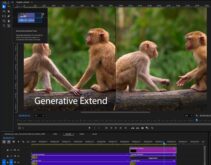Certainly the most memorable computer commercial of all time was Apple’s 1984 Super Bowl advertisement, with slack-jawed drones watching an Orwellian speaker on a huge screen smashed with a hammer flung by an admirably athletic young woman. The advertisement, directed by Ridley Scott of Blade Runner fame, railed against “unification of thought,” and promised that the Macintosh would prevent 1984 from becoming like 1984.
What’s remarkable, in retrospect, is how much Apple and its Macintosh have come to represent unification of thought, while Microsoft, which later assumed IBM’s Evil Empire role, arguably offers much more variety, flexibility, and choice. Equally remarkable is that, for many users, Apple’s transition may not be such a bad thing.
Let me explain. A frequent question at the rodeos, bluegrass festivals, and tractor-pulls that serve as the centerpiece of my recently adopted country life is the Macintosh versus Windows question. Since the last time I owned a Macintosh was in 1987, I decided to benefit from an updated perspective, and sought out a new Mac. Apple supplied the PowerBook G4 for a Final Cut Express review written for another magazine. They were gracious to extend the loan long enough to allow me a fresh look at the Macintosh and associated software. Though I didn’t throw away my Windows computers, I did transfer substantial workload to the PowerBook, including virtually all galley-reading and editing on a book I wrote in early 2003, and it served as my primary laptop on several business trips. In addition to Final Cut Express, I built projects using Adobe Premiere, as well as Apple’s iDVD, iMovie, and iPhoto.
Here are my thoughts. In terms of the computer itself, the PowerBook G4 can’t be beat. It’s light, thin, and eye-catching, the screen is wonderful, battery life is great, and its wireless networking performance is exceptionally robust. The Pioneer SuperDrive recorder offers wonderful utility, even if you can’t easily access -RW mode. The only glaring omission—almost laughable in its “not-invented-here” denial—is the lack of right mouse-click support on the built-in track pad (although you can add this capability with an external mouse).
OS X is equally impressive. Connecting to the Internet via Mindspring or an Ethernet connection was a breeze, and I was able to successfully load and run Microsoft’s Office Suite, as well as Final Cut Express and the iLife suite. iMovie, iDVD, and iPhoto are wonderfully intuitive, reasonably feature-rich, share a similar interface, and—in the case of the first two—play well together, simplifying the editing-to-authoring transition.
The Macintosh experience outside the Apple core was quite good, though not totally trouble-free. With Microsoft Word, the Mac jolted to a halt briefly during Autosave functions, and I experienced some minor incompatibilities when viewing certain less popular Web sites.
My biggest concern is that for video editing and authoring, I feel locked into Apple’s applications. For example, I can choose from at least nine consumer video editors on the Windows platform, but iMovie is my only choice on the Mac. Similarly, I have several alternatives for entry-level DVD authoring in Windows, but iDVD is my only choice on the Mac.
It’s easy to see how these circumstances arose. With third-party development waning for the Macintosh, Apple had to take over and develop applications themselves, even though success would further deter third-party developers. To their credit, Apple developed applications that are arguably best-in-class, and that’s one of the most compelling features for the Mac in the consumer space. It’s ironic, however, that Apple, who once spent millions to condemn the unification of thought, now has a product offering that’s any color you want so long as it is black.
For many users, of course, black may be the best choice. That’s because consumers considering Windows computers need to understand that freedom of choice isn’t exactly free. If you choose editing, authoring, and still-image products from different vendors, chances are they will look completely different and won’t integrate well. You’ll have multiple interfaces to learn, and clumsier handoffs than a first-time relay team.
Moving up the chain, more serious digital video developers on the Mac platform will have only one video editor to choose from in the sub-$999 space (Final Cut Express)—with the recent discontinuation of Premiere for Mac—while Windows users have at least four. Similar numbers limit choices for DVD authors.
Moreover, professionals choosing their digital studio tools must be acutely concerned with performance, and this is where Apple is starting to lag. For example, in preview and encoding trials performed with Adobe Premiere on both the PowerBook and a similarly priced Dell Latitude D800, the Dell outperformed the PowerBook by up to 100% on several tests. A number of other sources, including PC Magazine and www.digitalvideoediting.com, have confirmed that the fastest Windows-based workstations usually outperform the fastest Macintosh, often by a significant margin. And for career Premiere for Mac editors loath to start over with Final Cut anytime soon, this issue remains a relevant one.
What’s the net/net? Next time I get asked the Mac versus Windows question over the hoe-down din, I’ll slowly wipe the barbeque sauce from my face and ask about the target user. If it’s someone just looking for an easy-to-use, integrated solution for most computing tasks, I’ll say that both are fine choices, though Macintosh is better integrated and probably more user-friendly, but more expensive.
If it’s a prosumer or professional looking to push the envelope—double-speak be damned—I’ll note the Mac’s too-unified lack of applications and the performance deficiencies, and push the user towards a Windows-based machine.
 Streaming Learning Center Where Streaming Professionals Learn to Excel
Streaming Learning Center Where Streaming Professionals Learn to Excel








